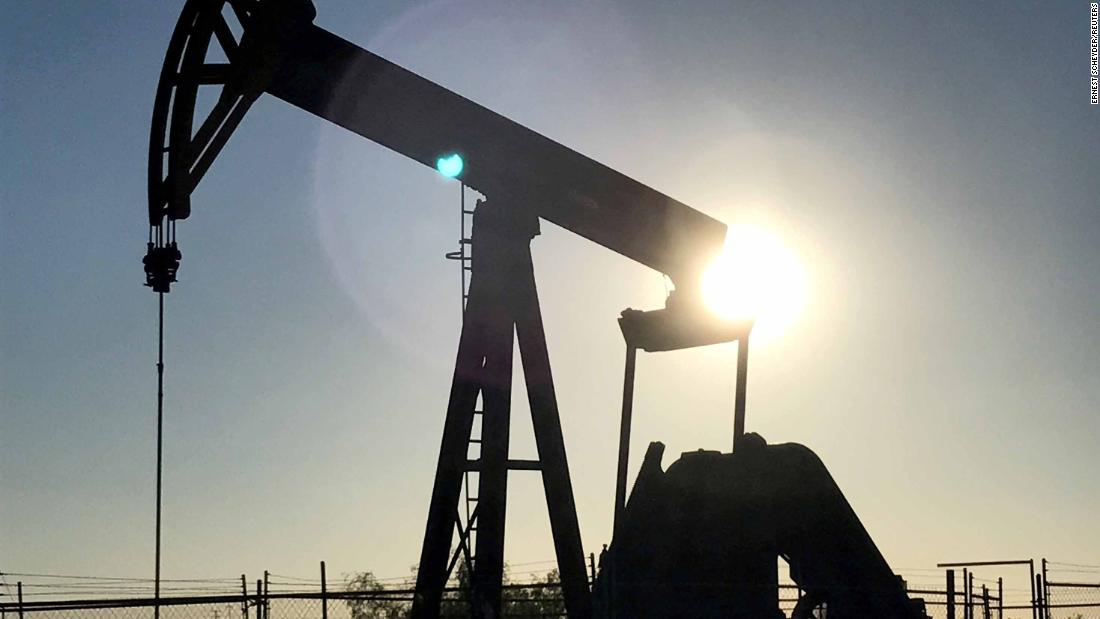
Thanks to the shale oil and natural gas boom, the United States will export more energy than it imports in 2020 for the first time since 1953, according to a forecast published Thursday by the Energy Department's statistics division. That's two years earlier than what was previously expected.
And it won't be a one-off achievement. The United States is likely to be a net energy exporter through at least 2050, the Energy Information Administration said.
"It's a big deal. We're not as reliant on foreign oil as we were," said Michael Tran, managing director of global energy strategy at RBC Capital Markets.
The seeds for this milestone were planted by the shale revolution that began last decade. New technology unlocked vast amounts of natural gas and crude oil in the United States. Production of both skyrocketed, which reshaped the global energy landscape.
The end of the 40-year ban on oil exports in late 2015 really changed the game. US shipments of crude have exploded since then.
According to the scenario the EIA thinks is mostly likely to happen, the United States should become a net exporter of petroleum liquids — oil and products like gasoline — after 2020. It's a milestone that was briefly achieved late last year. For one week in November, US exports of crude oil and petroleum products exceeded imports, the EIA said. It was the first time that happened on a weekly basis since the EIA began tracking in 1991.
"US crude exports are wildly disrupting the global oil trade. And US shale continues to grow at an unbridled pace," Tran said.
Daily oil output to spike above 14 million barrels
Fueled by shale hotbeds like the Permian Basin of Texas, the United States surpassed Russia and Saudi Arabia in terms of monthly oil production last year. US output spiked from about 5 million barrels per day in 2008 to a record 10.9 million barrels last year, the EIA said.
The International Energy Agency said the 2 million barrel-per-day jump in US production last year was the biggest jump ever recorded by any country.
The growth is likely to continue, albeit at a more moderate pace. According to the EIA's most likely scenario, US oil production is expected to keep setting annual records through 2027, and remain greater than 14 million barrels per day through 2040.
These long-term energy projections are subject to some uncertainty. Analysts are making assumptions on technology, policies and prices, some of which may not pan out.
Climate impact
Still, America's energy boom has profound implications for the economy, national security and, of course, the environment.
Last week, a report by Oil Change International warned that new US oil and gas development could unleash the same amount of carbon pollution as nearly 1,000 coal-fired power plants.
The group called it a "climate catastrophe" at precisely the worst time.
The EIA offered more promising signs on the carbon front in the power sector. Electricity generation from coal is expected to shrink to 17% by 2050, a sharp drop from 48% in 2008. Renewable energy is expected to take 31% of the power market by 2050, up from 18% today.
Energy independence?
Even though the United States is shrinking its reliance on foreign oil, it won't be able to credibly declare energy independence in 2020.
"You're not going to be fully insulated from geopolitical risk or decisions that OPEC makes," RBC's Tran said.
That's in part because of the makeup of America's refinery complex, which requires a healthy dose of medium and heavy crudes found overseas. Refineries can't operate solely on the very light crude found in domestic shale oilfields.
While becoming a net energy exporter is a "tremendous development," the United States wouldn't be "completely self-sufficient," said Joe McMonigle, a former Energy Department official under President George W. Bush who is now senior energy policy analyst at Hedgeye Potomac Research.
"Until the US refining sector is able to process more lighter crudes, we're never going to have energy independence," McMonigle said.
No comments:
Post a Comment